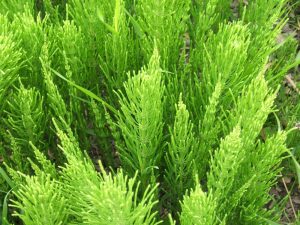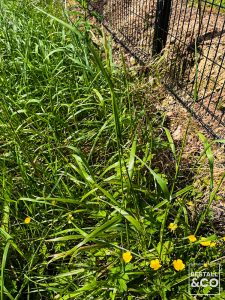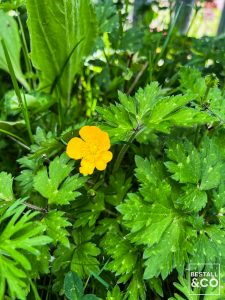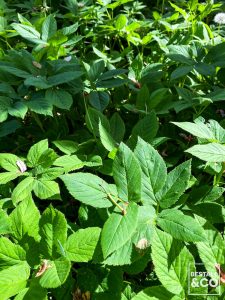Ten Nightmare Perennial Weeds Common in Britain
In Britain our gardens are under constant threat of invasion! The enemy? These nightmare Common British perennial weeds (not to mention the annuals you can read about here). Perennial means they live for more than one year and have a nasty habit of hanging around, seeding or spreading everywhere and if left untreated can be a nightmare to get rid of.
How to deal with these nightmare perennial weeds
If you’re an organic gardener, the only real eradication method is digging out as much of these plants and roots as possible. They often send huge tap roots deep into the soil or multiply by spreading out widely, so removing them by hand is no mean feat (although it is rather satisfying when they don’t come back. If they’re rhizomatous – a rhizome being an underground spreading stem – it’s important to dig out as much of these rhizomes as you can. But, be warned! If you break off even a small piece it’s pretty likely that it will return. If they have deep tap roots, they can regenerate so be sure to remove as much as physically possible (best done when the soil is wet and growth is active in late April or very early May before they set new seeds.
Regular hoeing or cutting back of regrowth will significantly weaken the plants over time, but cannot guarantee complete removal. Similarly, you can weaken them by covering the flower bed with thick black polythene or a very thick layer of wet cardboard weighted down with compost. Your prized plants must be carefully removed first though, ensuring no weed roots come out with them. You’ll also have to leave the polythene in place until September to ensure effectiveness.
If you’re gardening in an eco-friendly way, persistence and patience are key.
If you are looking for more ideas on how to kill weeds without the use of chemicals this RHS list shows you how.
The weeds
1. Brambles
Latin name: Rubus fruticosis agg.
Other common names: Blackberry
Insight: Stems can grow up to 2m in length and root when the tip touches the ground.
2. Couch grass
Latin name: Elymus repens
Other common names: Scutch grass, twitch grass
Insight: Spreading rhizomes which can tangle around the roots of other plants, making removal trickier.
3. Creeping buttercup
Latin name: Ranunculus repens
Insight: Runners develop from each leaf node, each forming a strong root network when touching the ground. Seeds and severed nodes also aid its spread.
4. Creeping thistle

Latin name: Cirsium arvense
Insight: It has a deep tap root as well as many seeds carried on the wind. Its roots also spread out and are brittle, meaning any snapped off during extraction can re-shoot easily.
5. Dandelion
Latin name: Taraxacum officinale
Insight: We’re all familiar with its fluffy seed heads that fly around between March and October. It also possesses a deep tap root from which it can regenerate.
6. Dock
Latin name: either Rumex obtusifolius or R. crispus
Insight: It has a branching, thick tap root delving up to 90cm deep. Its seeds can survive in the soil for up to 50 years. Digging out at least the top 12-15cm of the tap root should however prevent the individual weed’s regrowth.
7. Ground elder
Latin name: Aegopodium podagraria
Other common names: Gout weed, bishop weed, jump-about
Insight: Another troublemaker that creeps via its rhizomes, needing careful digging out
8. Hedge bindweed

Latin name: Calystegia sepium
Other common names: Bellbind
Insight: Its white trumpet-like flowers are pretty, but this is a major pest. It’s rhizomes can spread up to 2m a year and the smallest segment of rhizome will regrow.
9. Horsetail

Latin name: Equisetum arvense
Other common names: Mare’s tail
Insight: Easily recognisable as it resembles miniature pine forests. It’s the opposite of hedge bindweed, sending its roots up to 2m down into the earth. Its rhizomes spread quickly and up spring dense clumps of foliage.
10. Perennial nettles
Latin name: Urtica dioica
Insight: We all know these varmints from their sting. The roots creep under the surface and can send up shoots reaching a maximum of 1.2m in height.
This article on common British perennial weeds was updated in May 2024
Kevin Gelder
Kevin joined Bestall & Co in late 2017 and brought a range of skills with him from a varied background. He gained a degree in French and Italian from Lancaster University in 2009 before successfully completing a PGCE at the University of Sheffield in 2011. He built on his communication skills through secondary language teaching, before working in healthcare administration.
Ultimately though it was his passion for plants and gardening which brought him to Bestall & Co as a member of the planting team, and although he's now moved back to an office based role, the articles he wrote whilst he was still with us live on.










